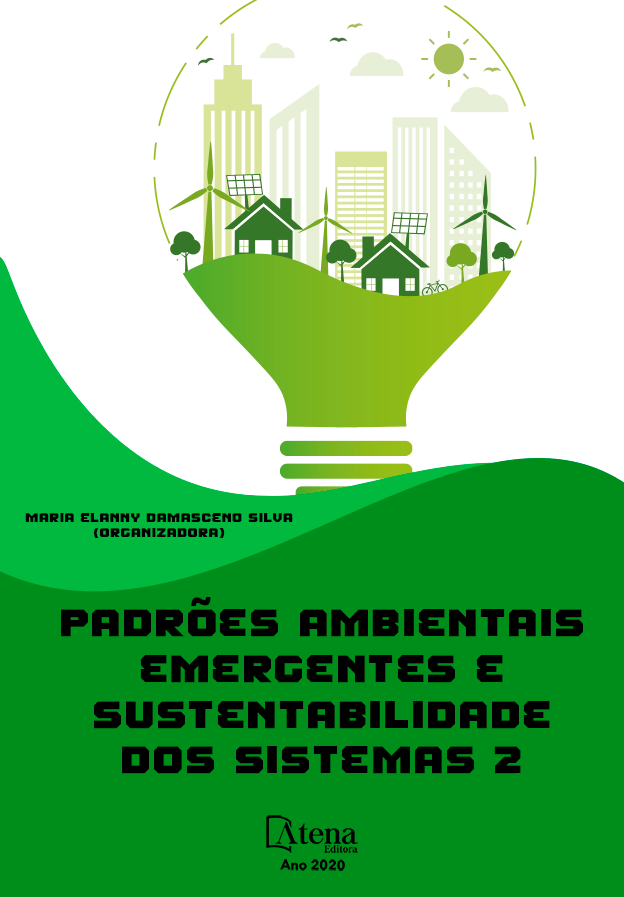
APROVEITAMENTO DO LODO DE CURTUME NA AGRICULTURA: AVALIAÇÃO PRELIMINAR DA TOXICIDADE E AÇÃO BIOFERTILIZANTE EM PLANTAS
Vários estudos vêm sendo realizados a respeito dos impactos ambientais oriundos da destinação inadequada do lodo de curtume. Uma alternativa de reutilização desse resíduo, é sua aplicação na agricultura, como fertilizante e/ou corretivo. Todavia, existem algumas limitações para seu uso, devido a elevada concentração de matéria orgânica, cromo e sódio na sua composição, que podem ocasionar um estresse salino nas plantas. Partindo disso, objetivou-se avaliar o crescimento e desenvolvimento de girassol, milho e eucalipto cultivadas em solo com aplicação de lodo de curtume, para a identificação de uma dose segura de utilização sem interferir no crescimento e desenvolvimento das plantas. O lodo de curtume foi incorporado ao solo nas doses de: 0,1; 1; 10; 100 e 250 de lodo/solo (g kg-1). O experimento foi conduzido por 30 dias e foram avaliadas as seguintes variáveis: comprimento de raiz e parte aérea das plantas e, número de folhas. A dose de 10 g kg-1 promoveu aumento em todas as variáveis no eucalipto com resultados superiores ao tratamento controle, sendo uma dose promissora para o reuso como biofertilizante. Entretanto, a dose de 100 g kg-1 interferiu negativamente no crescimento do girassol, milho e eucalipto, gerando sintomas de toxicidade e a dose 250 g kg-1 foi letal para o girassol e eucalipto.
APROVEITAMENTO DO LODO DE CURTUME NA AGRICULTURA: AVALIAÇÃO PRELIMINAR DA TOXICIDADE E AÇÃO BIOFERTILIZANTE EM PLANTAS
-
DOI: 10.22533/at.ed.47120051116
-
Palavras-chave: Adubo. Fitotoxicidade. Resíduo. Salinidade. Tratamento do couro.
-
Keywords: Fertilizer. Phytotoxicity. Residue. Salinity. Leather treatment.
-
Abstract:
Several studies have been carried out regarding the environmental impacts arising from the improper destination of the tannery sludge. An alternative to reuse of this residue is its application in agriculture, as a fertilizer and/or corrective. However, there are some limitations to use, due to the high concentration of organic matter, chromium and sodium in its composition, which can cause salt stress in plants. Based on this, the objective was to evaluate the growth and development of sunflower, corn and eucalyptus cultivated in soil with application of tannery sludge, for the identification of a safe dose of use without interfering with plant growth and development. The tannery sludge was incorporated into the soil in the doses of: 0.1; 1; 10; 100 and 250 of sludge/soil (g kg-1). The experiment was conducted for 30 days and the following variables were evaluated: root length and aerial part of the plants and number of leaves. The dose of 10 g kg-1 promoted an increase in all variables in the eucalyptus with results superior to the control treatment, being a promising dose for reuse as a biofertilizer. However, the dose of 100 g kg-1 interfered negatively in the growth of sunflower, corn and eucalyptus, generating symptoms of toxicity and the dose 250 g kg-1 was lethal for sunflower and eucalyptus and caused the reduction of variables, presenting plants with nutritional deficiencies and anomalies.
-
Número de páginas: 15
- Larissa Maria Vaso
- Natália da Silva Guidorissi
- Pedro Henrique Lande Brandão
- Roanita Iara Rockenbach
- Jaine Pereira Flores
- Valdemir Antônio Laura
- Gislayne de Araujo Bitencourt


